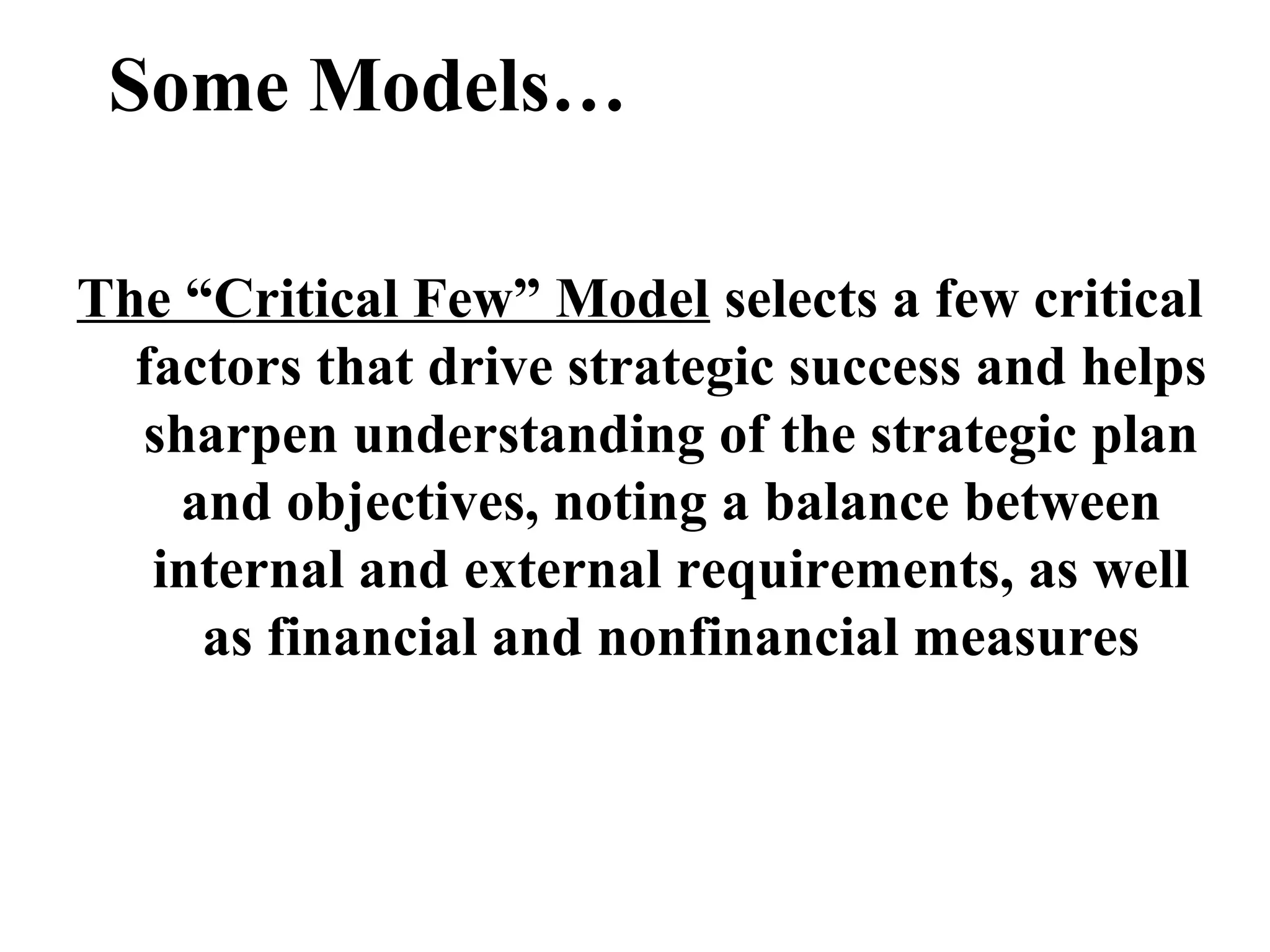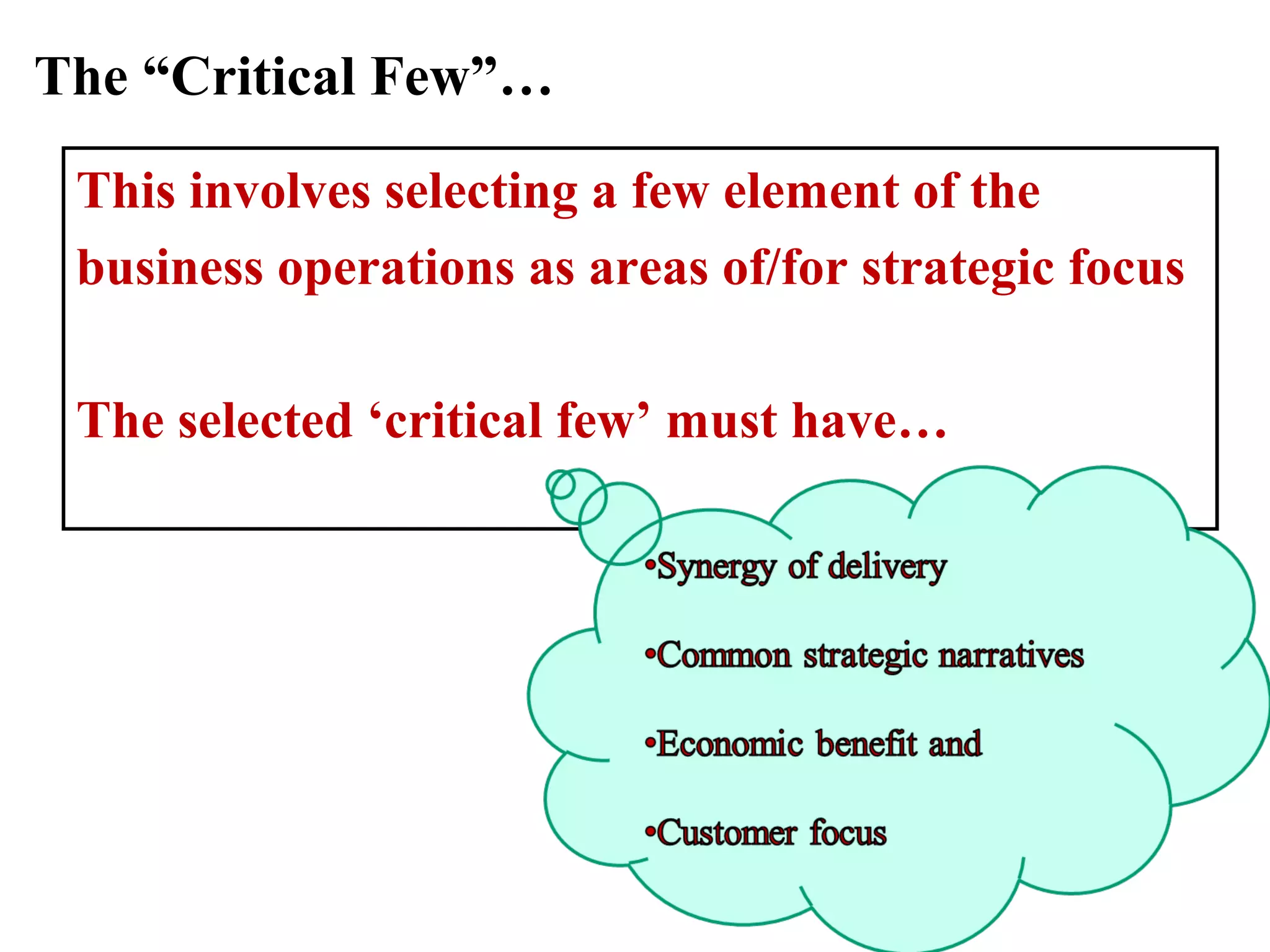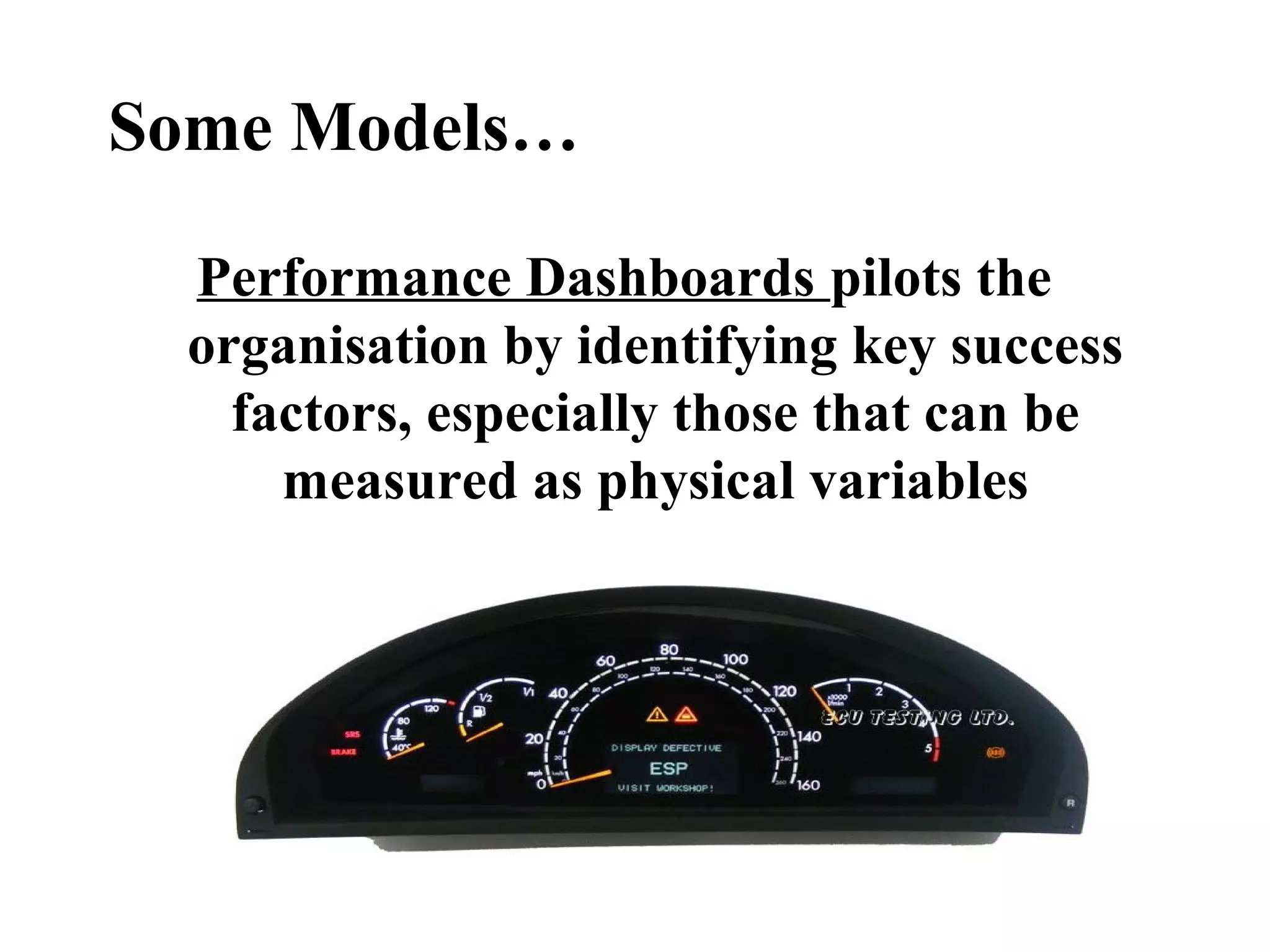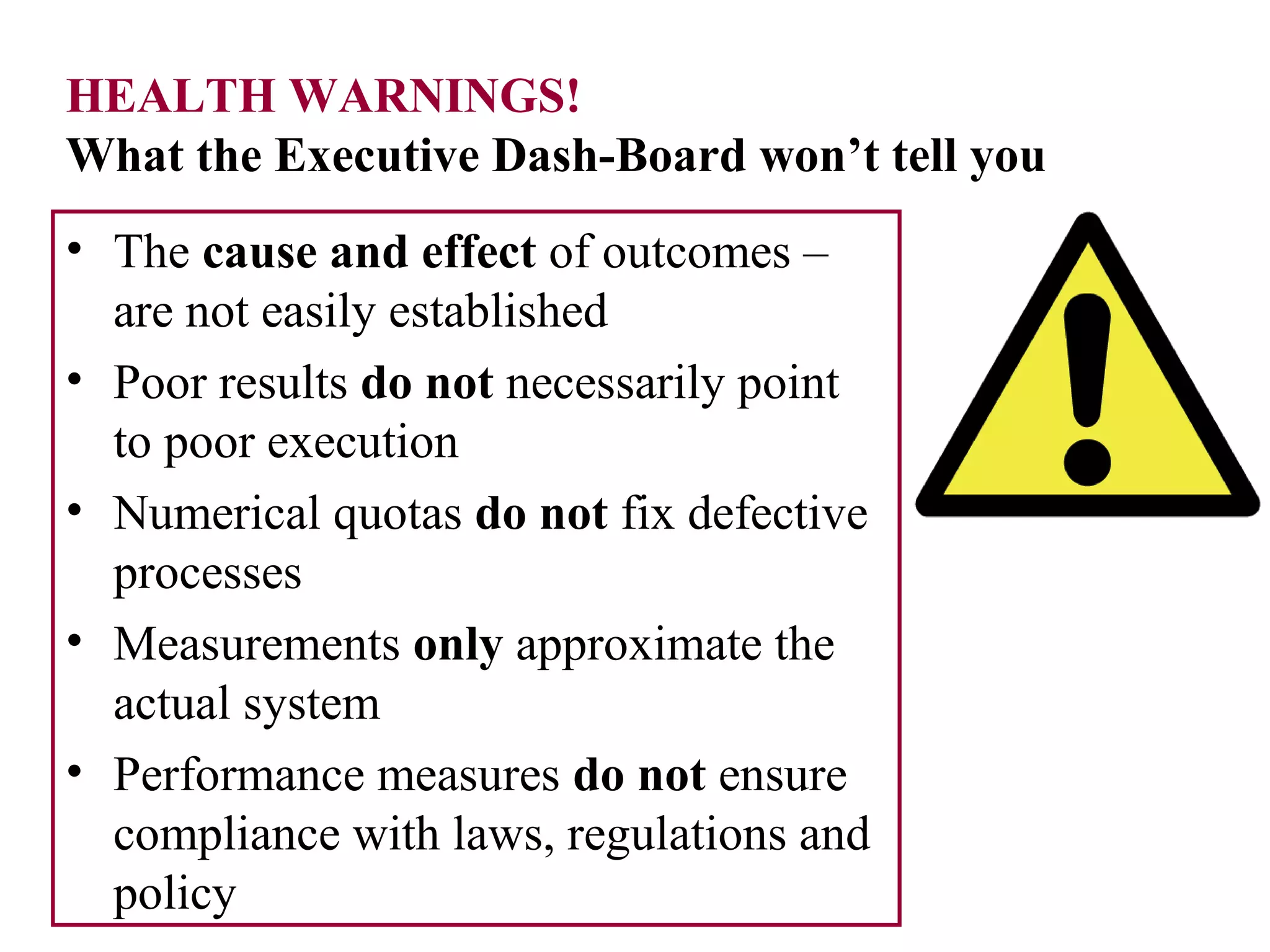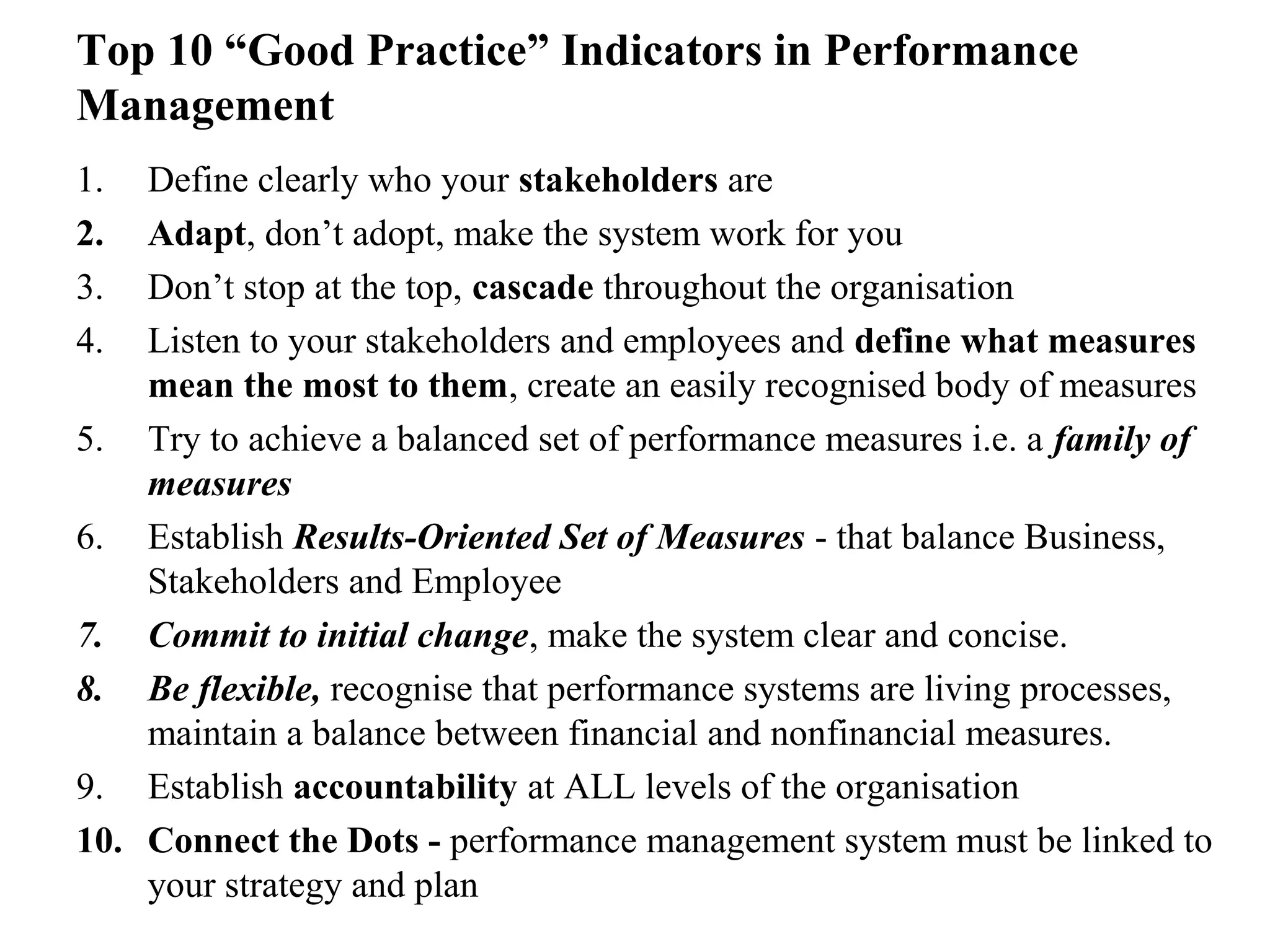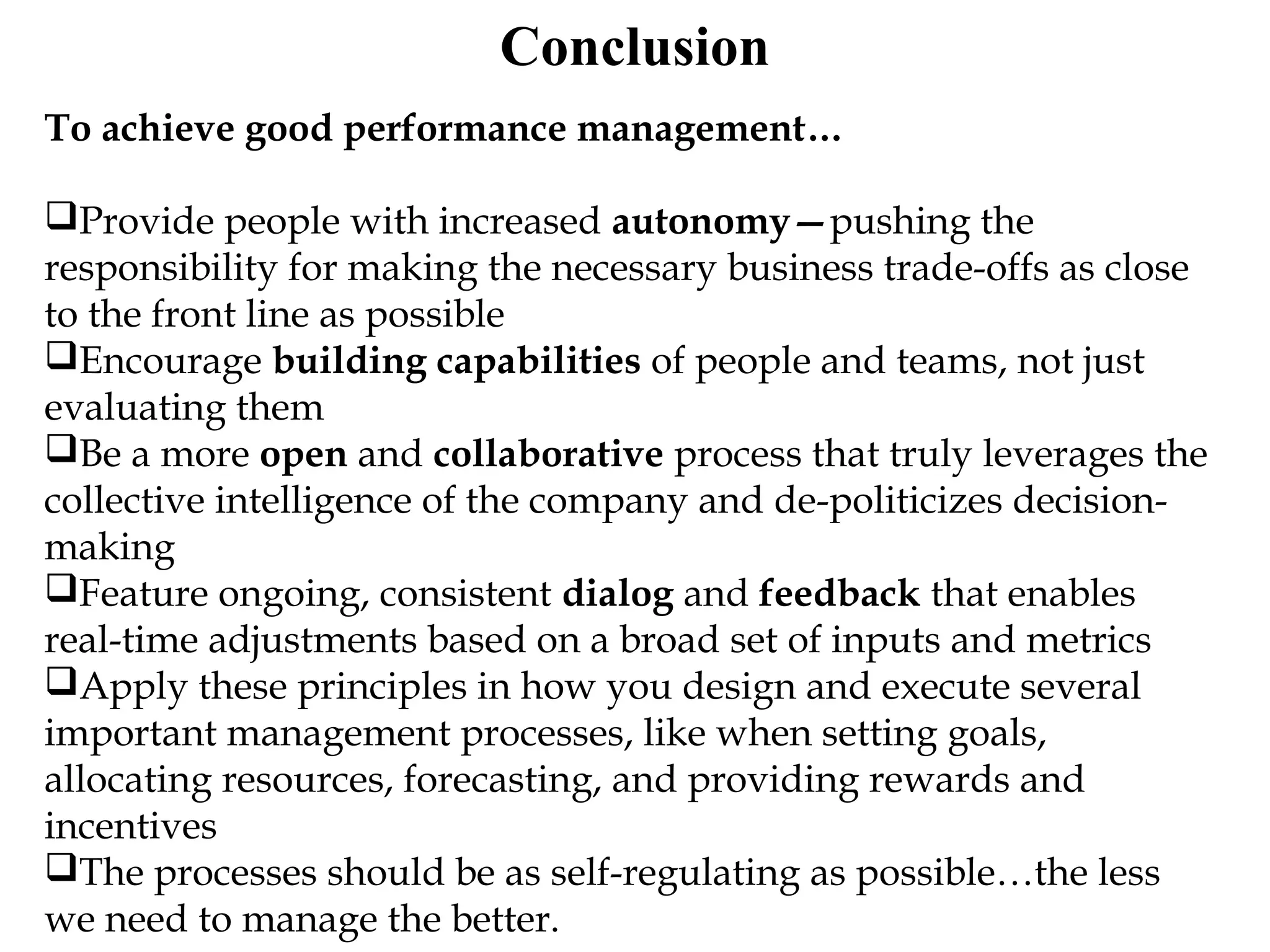This document discusses performance management as a methodology for assessing and reporting on organizational progress, management, and governance impact. It provides an overview of performance management systems, including their purpose of achieving objectives, process optimization, and managing outcomes. Various models of performance management systems are described, such as the balanced scorecard and critical few model. Methods for evaluating performance management systems include the SMART-ER test, quality check, and three criteria test. Key aspects of effective performance management systems are outlined.

![It would be nice if all of the data [we] require could be
enumerated because then we could run them through
[computers] and draw charts…
However, not everything that can be counted counts, and
not everything that counts can be counted
William Bruce Cameron instead of Albert Einstein.
Cameron’s 1963 text “Informal Sociology: A Casual
Introduction to Sociological Thinking”
The Paradox in performance Management
What are you counting and reporting...?](https://image.slidesharecdn.com/performancemanagement-140806171658-phpapp02/75/Performance-management-2-2048.jpg)
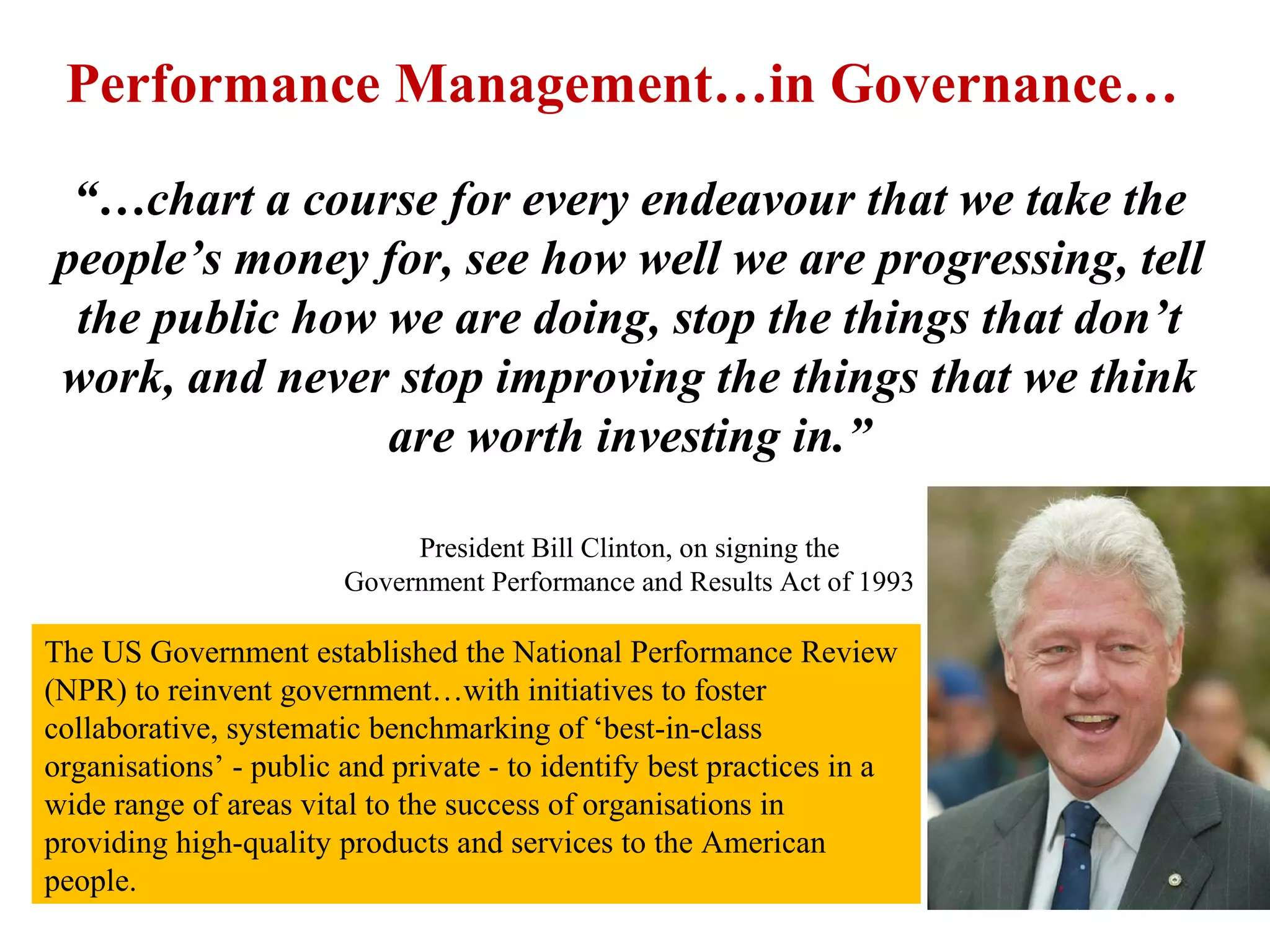
![Performance Management System is….
1. An overall management system aimed at achieving
organisational objectives to meet the needs of customers
[local citizens’]
2. Process optimization to attain increased efficiency and
effectiveness ...in a continuous cycle, allowing options for
improvement.
3. Managing outcome...to reduce or eliminate variation
[waste] with the goal to arrive at sound decisions about
actions affecting the organisations’ processes and output.](https://image.slidesharecdn.com/performancemanagement-140806171658-phpapp02/75/Performance-management-4-2048.jpg)
![What Are Performance Measures?
a. Qualitative & Quantitative measures of
the value of our projects/services, and
the processes that produce them.
b. Provide us with the information necessary
to make intelligent decisions about what
we do.
c. Tools to help us understand, manage, and
improve what our organisations do. They
let us know:
• how well we are doing
• if we are meeting our goals
• if our [citizens] stakeholders are satisfied
• if our processes are under control
• if and where improvements are necessary](https://image.slidesharecdn.com/performancemanagement-140806171658-phpapp02/75/Performance-management-5-2048.jpg)
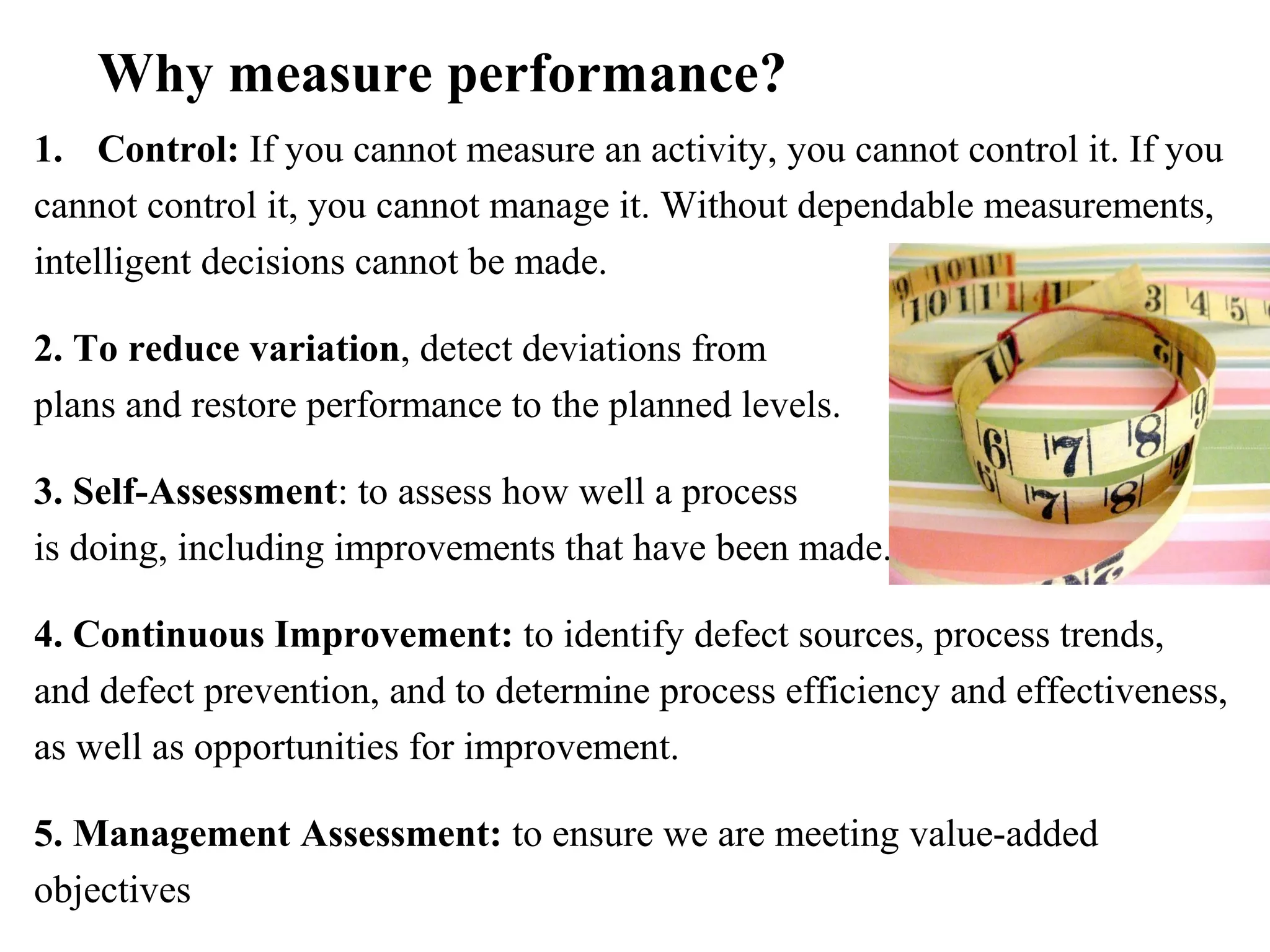
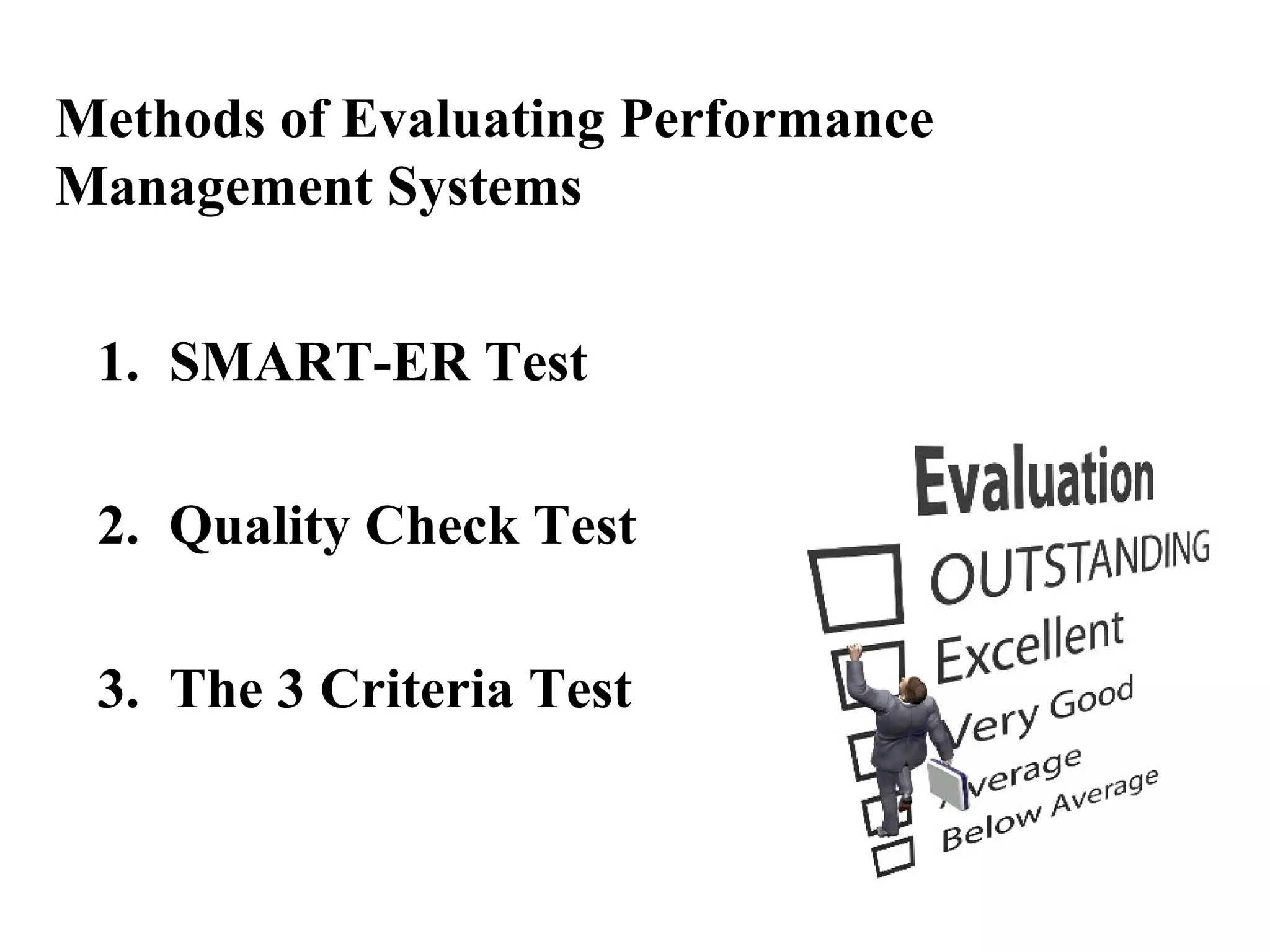
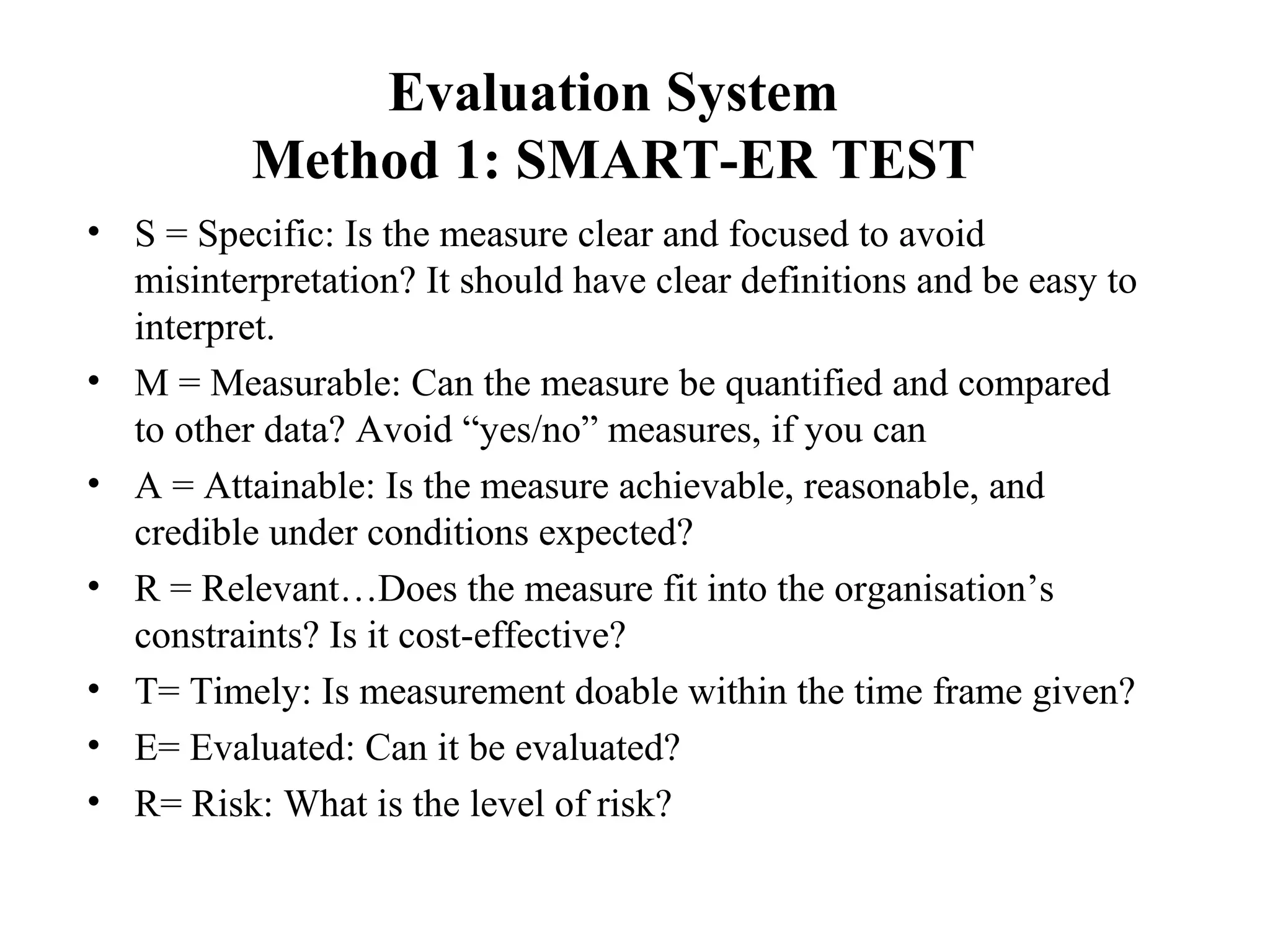
![Evaluation System
Method 2: Quality Check
• Is the measurement objectively measurable?
• Does the measurement include a clear statement of the end results expected?
• Does the measure support [stakeholder] requirements, including compliance
issues where appropriate?
• Does the measure focus on the effectiveness and/or efficiency of the system
being measured?
• Does the measure allow for meaningful trend or statistical analysis?
• Has appropriate industry or other external standards been applied?
• Does the measure include milestones and or indicators to express qualitative
criteria?
• Are the measures challenging, and at the same time, attainable?
• Are assumptions and definitions specified for what constitutes satisfactory
performance?
• Are those who are responsible for the performance being measured been fully
involved in the development of this measure?
• Has the measure been mutually agreed upon by you and your stakeholders?](https://image.slidesharecdn.com/performancemanagement-140806171658-phpapp02/75/Performance-management-9-2048.jpg)
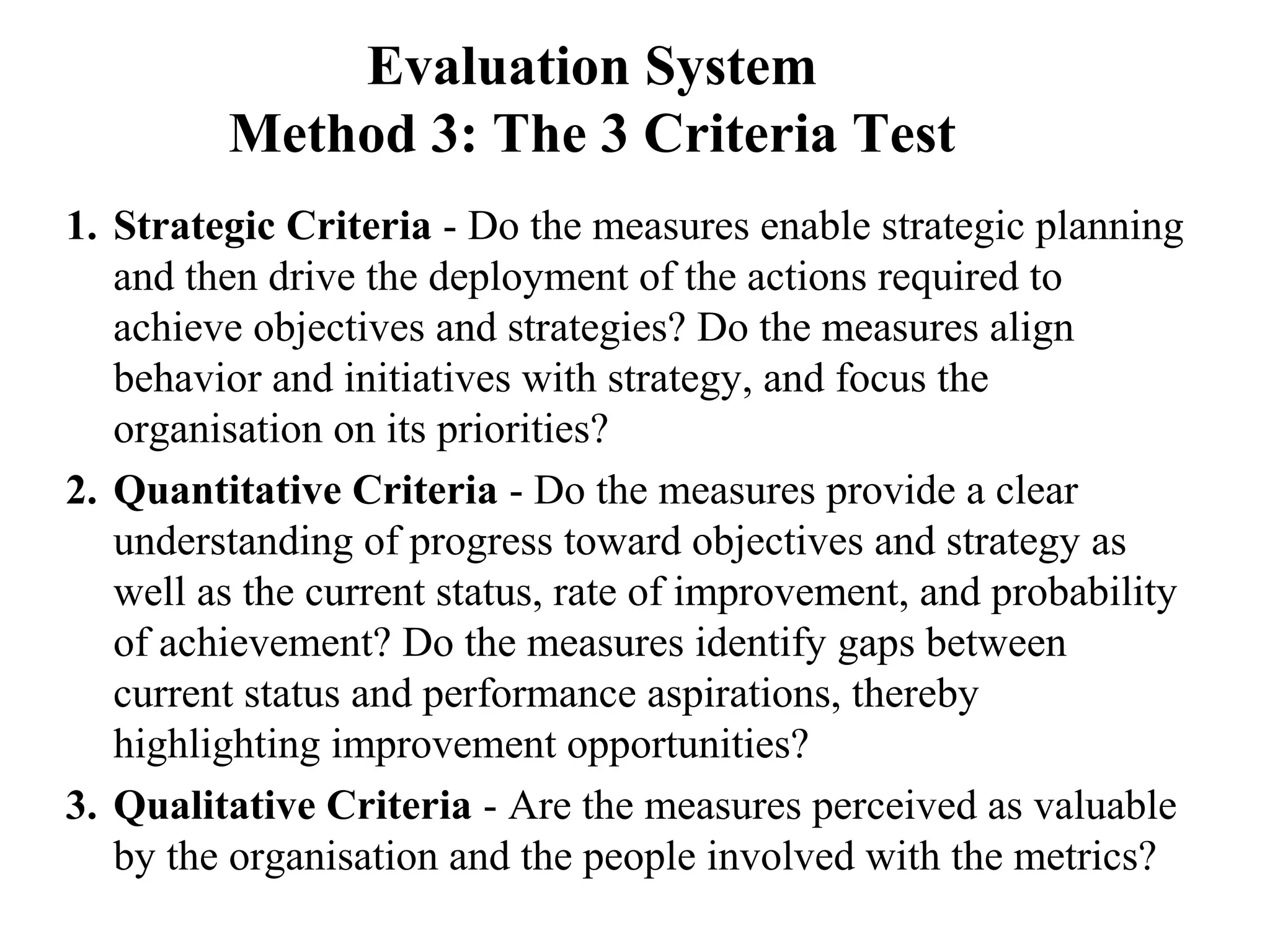
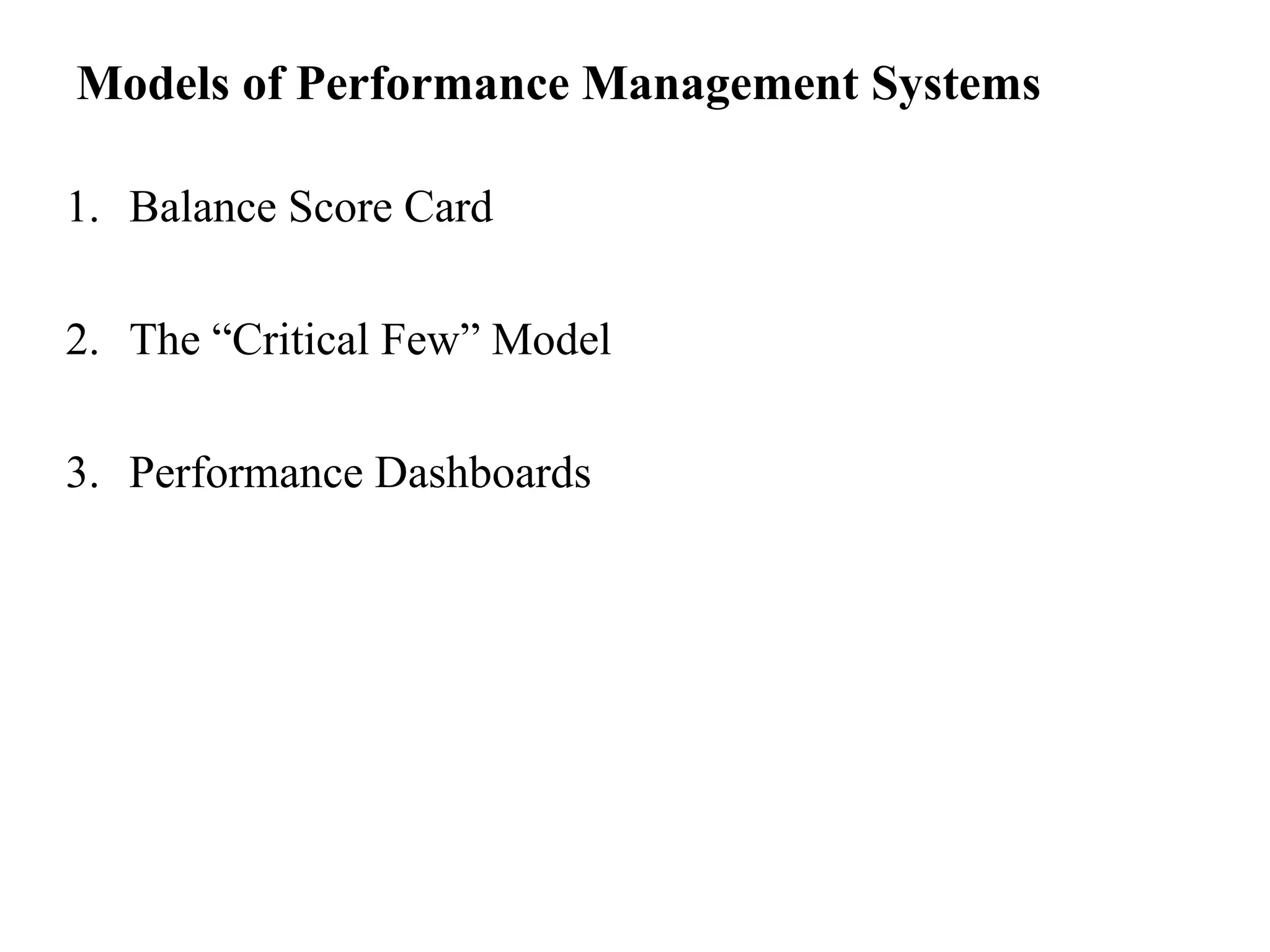
![Some Models…
Balance Score Card [Robert Kaplan and
David
Norton, 1992] - looks at four interconnected
business perspectives, takes a systematic
approach to assessing internal results while
probing the external environment](https://image.slidesharecdn.com/performancemanagement-140806171658-phpapp02/75/Performance-management-12-2048.jpg)

